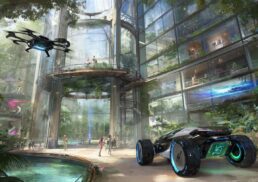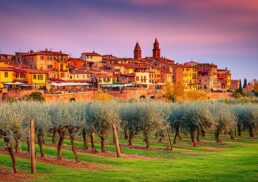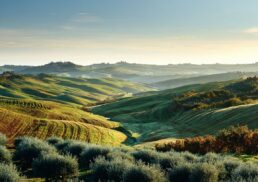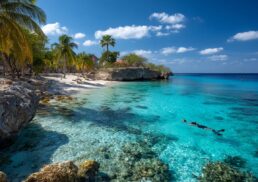The country of Venezuela, located in northern South America, is known for its rich cultural heritage and vast natural resources. From its diverse geography, which includes the Andes Mountains and the Orinoco River, to its complex political history, Venezuela offers a unique blend of natural beauty and socio-political challenges. This article provides an in-depth look at the nation’s geographical landscape, historical evolution, political dynamics, economic situation, and cultural aspects.
Table of Contents
Key Takeaways
Venezuela’s geographical diversity includes mountains, jungles, plains, and coastal regions, dictating various economic activities and cultural practices across the nation.
The country’s political landscape is shaped by authoritarian governance, exacerbated by international sanctions, internal corruption, and a call for free elections in 2024 to address the ongoing crisis.
Venezuela faces severe economic challenges with a heavy reliance on the oil industry, high inflation rates, and a humanitarian crisis characterized by shortages of essential goods and healthcare services.
Geographical Landscape of Venezuela
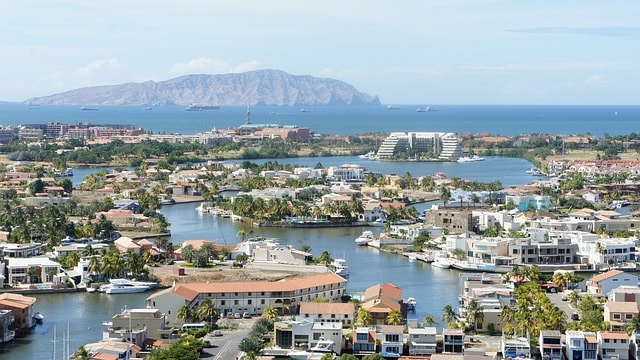
Venezuela, located at the northern end of South America, boasts a physiographically diverse landscape that includes mountains, jungles, plains, and coastal areas. Its topography is a tapestry of lowland plains, towering mountains, and forested uplands, each contributing uniquely to the country’s economic and social structures. The Maracaibo lowlands, northern mountains, wide plains, and Guiana Highlands form the primary topographical regions, each playing a crucial role in Venezuela’s identity.
The geographical diversity of Venezuela is not merely a backdrop but a dynamic participant in its national story. From the bustling cities nestled in the valleys to the remote, untamed expanses of the Amazon Basin, each region influences the livelihoods and cultures of its inhabitants. These varied landscapes have historically dictated economic activities, from oil extraction in the lowlands to agricultural practices in the fertile plains.
Major Physical Features
Major physical features punctuate Venezuela’s landscape, each with its own unique significance. The Andes Mountains, divided into the Perijá and Mérida ranges, dominate the western part of the country, with Pico Bolivar standing as the highest peak at 4,979 meters. The majestic Orinoco River, one of the longest in South America, carves a path through the country, its delta forming a significant triangular projection into the Atlantic Ocean. This river system not only supports biodiversity but also plays a critical role in the economy and transportation.
The llanos plains stretch across central Venezuela, providing fertile ground for agriculture and cattle ranching, while the Caribbean coast and numerous islands offer rich marine resources and stunning tourist destinations. These physical features, from the rugged mountains to the expansive plains and coastal areas, create a diverse and vibrant natural environment that supports a variety of ecosystems and human activities.
Climate Zones
Venezuela’s climate zones are as diverse as its geography, with significant variations influenced by altitude and proximity to the coast. The highland areas, such as the Andes, can experience temperatures as low as 8 °C, creating a stark contrast to the tropical lowlands where temperatures typically range from 26 to 28 °C. These climatic differences shape agricultural practices, lifestyle, and even the health of the population in different regions.
The northern coast and other coastal areas, influenced by the Caribbean Sea and Atlantic Ocean, enjoy a more temperate climate, which, combined with fertile soils, supports a variety of crops and contributes to the region’s agricultural output. This climatic diversity ensures that Venezuela remains a land of contrasts, where each zone contributes uniquely to the nation’s natural wealth and cultural heritage.
Historical Evolution
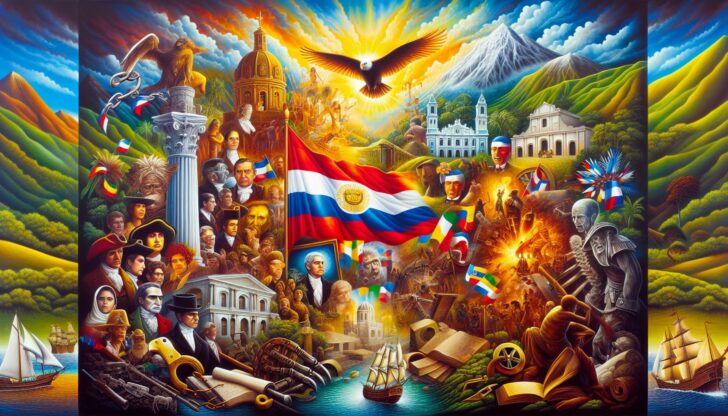
Venezuela’s history is a rich tapestry woven from pre-Columbian civilizations, colonial conquests, independence struggles, and modern transformations. The name ‘Venezuela’ itself, deriving from ‘Veneziola’ or the Indigenous term ‘Veneciuela’, hints at the deep historical roots and cultural amalgamations that define the nation. Over the centuries, Venezuela’s political system has evolved from stable democracies to more authoritarian regimes, reflecting the nation’s ongoing struggle with governance.
High levels of criminal violence and corruption have marred recent decades, leading to widespread protests and social unrest. Understanding Venezuela’s historical evolution is crucial for grasping the complexities of its current political and social landscape. From the ancient Indigenous cultures to the modern-day political challenges, each era has left an indelible mark on the country.
Pre-Columbian and Colonial Periods
Long before European contact, the area now known as Venezuela was inhabited by Indigenous communities for about 15,000 years, with the Arawak and Carib peoples being prominent during the colonial era. These early inhabitants developed sophisticated agricultural practices, including slash and burn techniques and permanent settled agriculture on the llanos. The Timoto–Cuica culture, noted for inventing the arepa, highlights the culinary traditions that continue to influence Venezuelan cuisine today.
Spanish colonization began in 1522, introducing significant cultural changes. The establishment of Maracaibo by Ambrosius Ehinger and the subsequent colonization efforts by the German Welser family, driven by the myth of El Dorado, are notable events from this period. Roman Catholicism was introduced, profoundly shaping the religious landscape, while Spanish influences permeated architecture, music, and language.
Independence and 19th Century Developments
The quest for independence was a pivotal chapter in Venezuela’s history. The first permanent Spanish settlement in Cumaná in 1523 marked the beginning of significant European colonization. Simón Bolívar, a central figure in Latin American history, led the charge for independence, culminating in the decisive Battle of Carabobo in 1821, which ultimately liberated Venezuela from Spanish rule.
The 1812 Caracas earthquake played a critical role in the collapse of the First Republic of Venezuela, demonstrating how natural disasters can influence political stability. The establishment of the Republic of Gran Colombia in 1819, uniting several South American nations under Bolívar’s leadership, was a significant attempt at regional unity, though it eventually dissolved due to political differences.
20th Century Transformations
The 20th century brought profound changes to Venezuela, primarily driven by the discovery and exploitation of oil. By 1935, Venezuela had the highest per capita GDP in Latin America, thanks to its booming oil industry. The Hydrocarbons Law of 1943 was a landmark reform, increasing the government’s share of profits from petroleum and laying the groundwork for future economic policies.
Hugo Chávez’s presidency, starting in 1998, marked a significant shift in Venezuela’s foreign relations, moving away from the United States and fostering alliances with countries like China, Russia, and Iran. The political landscape continued to evolve, with the opposition voting to remove Juan Guaidó in 2022, reflecting ongoing political turbulence.
The controversial 2021 legislative elections, boycotted by the opposition, underscored the deep divisions within the country.
Political Landscape
Venezuela’s political landscape is a complex interplay of power, influence, and resistance. The current government structure has been significantly affected by U.S. sanctions, which have blocked oil imports from the state oil company PDVSA and restricted access to the U.S. financial system. These sanctions have strained the country’s economy and heightened political tensions.
In response, the Venezuelan government has agreed to a roadmap for a free and fair presidential election in 2024, a move seen as a step towards resolving the political crisis, especially if an elected president emerges from the process.
Support from countries like:
China
Cuba
Iran
Russia
Turkey
has bolstered the Maduro regime, highlighting the global dimensions of Venezuela’s political struggles.
The manipulation of resource wealth to suppress political opposition remains a critical issue, influencing the overall political landscape.
Government Structure
Venezuela is structured as a nominal federal presidential republic, though in practice, it operates under an authoritarian regime. The National Assembly, comprised of 165 members who serve five-year terms, is the primary legislative body, though its power has been undermined by executive overreach and political manipulation.
Despite being a federal republic on paper, the concentration of power in the executive branch and the erosion of democratic institutions have compromised the country’s governance. The role of the National Assembly and other state institutions has been significantly diminished, contributing to the ongoing political crisis in democratic governments.
Key Political Figures
Nicolás Maduro, who has been the President of Venezuela since 2013, succeeding Hugo Chávez, remains a central figure in the country’s political landscape. His tenure has been marked by significant political and economic challenges, with Maduro attributing the opposition’s victories to an economic war.
Juan Guaidó, once recognized as interim president by many countries, has seen his influence wane, reflecting the volatile nature of Venezuelan politics. The ongoing power struggle between Maduro and the opposition, coupled with allegations of political corruption and the manipulation of state institutions, underscores the deep-rooted issues facing Venezuela.
Economic Overview
Venezuela’s economic landscape has been shaped by rapid changes, particularly in the 20th century when it transitioned from an agrarian society to an urbanized one. By 1928, Venezuela established itself as the world’s leading oil exporter, a status that significantly influenced its economic and social structures. The 1943 Hydrocarbons Law was pivotal in regulating the oil industry and increasing government revenue from petroleum.
Today, the economy heavily relies on petroleum and natural gas resources, which contribute significantly to export revenue. However, the country’s GDP shrank by three-quarters between 2014 and 2021, reflecting severe economic challenges. Understanding Venezuela’s economic history is crucial for grasping the current struggles and potential pathways to recovery.
The Oil Industry
The oil industry is the backbone of Venezuela’s economy, holding the world’s largest proven oil reserves, primarily located in the Orinoco delta. The nationalization of the oil industry in the mid-1970s was a significant turning point, transferring control from foreign entities to the state-owned Petróleos de Venezuela, SA (PDVSA). This move aimed to harness the country’s vast petroleum resources for national development and economic sovereignty during the oil boom.
Venezuela’s membership in the Organization of the Petroleum Exporting Countries (OPEC) since 1960 has positioned it as a key player in global oil markets. However, fluctuating oil prices and oil production levels have exposed the economy to vulnerabilities typical of petrostate nations. The reliance on oil has meant that economic fortunes are closely tied to the global petroleum sector, making diversification efforts all the more critical.
Despite its significant oil wealth, Venezuela’s petroleum industry faces numerous challenges, including aging infrastructure, declining production, and the impact of international sanctions. These issues have compounded the country’s economic difficulties, highlighting the need for strategic reforms and investments in the oil sector to stabilize and revitalize the economy.
Economic Diversification Efforts
Economic diversification is essential for Venezuela to mitigate the risks associated with its heavy reliance on oil. Transparency in resource management is crucial to avoiding the pitfalls of the petrostate model, where resource wealth can lead to corruption and economic instability. Diversifying the economy involves developing other sectors such as agriculture, manufacturing, and tourism, which can provide sustainable growth and employment opportunities.
Efforts to diversify have been underway for years, but progress has been slow. The predicted growth of sovereign wealth fund assets to nearly $13 trillion by 2025 underscores the potential benefits of effective economic management and diversification. Joint ventures and foreign investments in non-oil sectors could play a significant role in driving economic development and reducing dependency on the petroleum sector.
Current Economic Challenges
Venezuela’s current economic challenges are formidable, with inflation averaging an astounding 8,213.6% over the past decade. In 2023, the annual inflation rate was a staggering 190%, exacerbating the already dire economic situation. Shortages of basic goods like milk, meat, coffee, rice, and medicines have become commonplace, driven by price controls and the withholding of US dollars from importers.
The country’s GDP per capita is significantly lower than the global average, and the economy has been contracting at an average annual rate of 9.2% over the last decade. Unemployment, crime, and a massive foreign debt burden of over $150 billion further compound the economic struggles. Addressing these challenges requires comprehensive economic reforms, effective governance, and international support.
Social and Cultural Aspects
Venezuela’s social and cultural landscape is as rich and diverse as its geography. Despite the economic hardships, the country boasts a vibrant cultural scene influenced by various ethnic groups and historical periods. Approximately 82% of Venezuelans live in poverty, a stark indicator of the deep economic struggles facing the nation. Yet, the resilience and cultural pride of the Venezuelan people continue to shine through.
Immigration has played a significant role in shaping Venezuela’s cultural mosaic. In the 19th century, immigrants from France, and later from countries like the United States, Spain, Italy, and Portugal, brought new cultural elements that enriched Venezuelan society. This blend of influences is evident in the country’s literature, music, and culinary traditions, creating a unique cultural identity.
Demographics and Ethnic Diversity
Venezuela’s population is a melting pot of diverse ethnicities, reflecting a rich blend of Indigenous, African, and Spanish heritage. These three main cultural groups have significantly influenced the country’s traditions, social dynamics, and cultural practices. The interplay of these heritages can be seen in various aspects of Venezuelan life, from the vibrant festivals to everyday customs.
The demographic composition of Venezuela is a testament to its history of colonization, migration, and cultural amalgamation. This diversity is not just a facet of the past but continues to evolve with new waves of immigration and cultural exchanges, making Venezuela a dynamic and culturally rich nation.
Language and Religion
Spanish is the official language of Venezuela, spoken by the majority of the population. However, the linguistic landscape is enriched by the presence of Indigenous languages, with Wayuu being the most spoken among them. These languages are an essential part of the country’s cultural heritage, preserving the traditions and identities of Indigenous communities.
Christianity, particularly Catholicism, is the predominant religion in Venezuela, deeply influencing its cultural and social norms. The country also boasts religious diversity, with an estimated more than 100,000 Muslims contributing to the spiritual and cultural tapestry. This religious pluralism reflects Venezuela’s history of cultural exchange and integration.
Cultural Contributions
Venezuela’s cultural contributions are vast and varied, spanning literature, music, and visual arts. The country’s folk music incorporates various regional styles, reflecting its ethnic diversity and rich cultural heritage. Notable Venezuelan writers like Rómulo Gallegos, Teresa de la Parra, and Miguel Otero Silva have made significant contributions to the literary landscape, influencing generations with their works.
In the realm of visual arts, Venezuela has a rich tradition in painting and sculpture, with influences from both European and Indigenous styles. Artists like Juan Vicente González, known for his contributions to Venezuelan Romanticism, have left a lasting impact on the country’s cultural scene.
These cultural achievements are a testament to the creative spirit and resilience of the Venezuelan people.
Environmental and Natural Resources
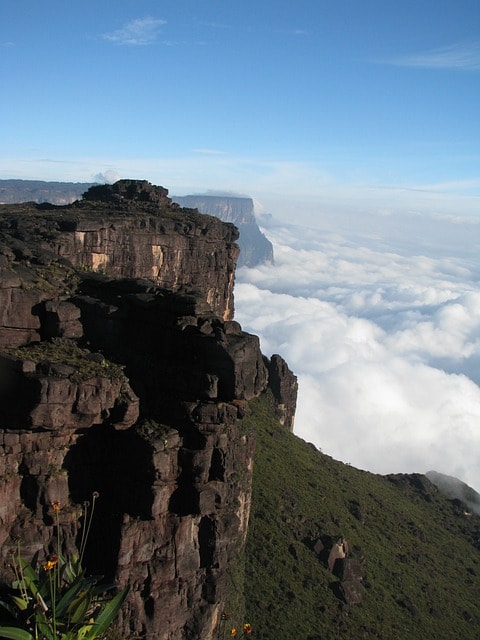
Venezuela’s environmental wealth is a cornerstone of its national identity. The country’s diverse ecosystems make it a biodiversity hotspot, home to numerous unique and endemic species. Canaima National Park, which includes Angel Falls, the highest waterfall in the world, is a testament to the country’s natural beauty and ecological significance. However, managing these resources is crucial for political stability, as natural resource conflicts can lead to violence and displacement.
The oil industry, a significant part of Venezuela’s economic development, also poses environmental challenges. Balancing resource extraction with conservation efforts is vital to ensure sustainable development and protect the country’s rich natural heritage. Effective natural resource management can mitigate environmental degradation and support long-term economic and social stability.
Biodiversity and Conservation
Venezuela’s biodiversity is one of its most valuable assets. The country is home to over 16,000 different plant species and more than 1,400 bird species, showcasing its rich avian biodiversity. These unique ecosystems require urgent conservation efforts to prevent ecological degradation and preserve the natural heritage for future generations.
Illegal mining poses a significant threat to these ecosystems, causing habitat destruction and pollution. Promoting sustainable practices and improving regulatory frameworks are essential to minimizing the environmental impact of resource extraction.
The Araguaney tree, known for its vibrant yellow flowers, symbolizes the country’s commitment to preserving its natural beauty and biodiversity.
Natural Resource Management
Effective management of natural resources is critical for Venezuela’s economic and environmental sustainability. The country is rich in oil, natural gas, and mineral reserves, which are vital for economic development. However, inadequate regulatory frameworks have led to rampant illegal mining and extensive environmental degradation.
Improving these regulatory frameworks is essential to protect Venezuela’s natural resources and ensure sustainable extraction practices. Balancing economic development with environmental conservation will help Venezuela leverage its natural wealth while preserving its ecological integrity for future generations.
International Relations
Venezuela’s international relations are shaped by its political and economic dynamics. By the end of 2023, over 7.7 million Venezuelans were refugees or migrants globally, with 6.5 million in Latin America and the Caribbean, highlighting the regional impact of the country’s political crisis. These migration patterns have influenced Venezuela’s relationships with neighboring countries and the broader international community.
Support from countries like China, Cuba, Iran, Russia, and Turkey has bolstered the Maduro regime, reflecting the global dimensions of Venezuela’s political struggles. The country’s interactions with these nations underscore the geopolitical complexities and strategic alliances that shape its international relations.
Regional Alliances
Venezuela’s regional alliances have fluctuated over the years, influenced by historical disputes and ideological differences. Relations with neighboring Colombia, for example, have been turbulent, marked by periods of diplomatic severance and cooperation. Issues such as territorial disputes and migration have further complicated these ties.
The country’s relationship with China has grown significantly, especially in areas of oil exports and joint infrastructure projects. Similarly, Venezuela has strengthened diplomatic relations with Iran, particularly in opposition to US foreign policy.
These alliances reflect Venezuela’s strategic efforts to bolster its international standing and support amid ongoing political and economic challenges.
Global Diplomatic Relations
On the global stage, Venezuela’s diplomatic relations have been contentious, particularly with the United States. The recognition of opposition leader Juan Guaidó in 2019 further strained ties, reflecting deep political divides. The diplomatic rift, exacerbated by issues related to oil prices and US interventions in Latin America, has significantly impacted Venezuela’s international relations.
Venezuela is a key member of the Bolivarian Alliance for the Peoples of Our America (ALBA-TCP), which promotes social, political, and economic integration in the region. This membership underscores Venezuela’s commitment to fostering cooperation with leftist governments and enhancing regional solidarity within the bolivarian republic.
These global diplomatic relations highlight the complex interplay of politics, economics, and ideology in shaping Venezuela’s international stance.
Learn more, Venezuela and Interrupted Diplomatic Relations.
Humanitarian Issues
The humanitarian crisis in Venezuela is a pressing issue, marked by severe shortages of food, medicine, and basic services. The underfunded healthcare system is struggling to cope with the crisis, exacerbated by a mass exodus of healthcare professionals and a lack of medical supplies. These challenges have led to widespread suffering and a significant decline in the quality of life for many Venezuelans.
Elections in Venezuela have been marred by allegations of fraud and the marginalization of opposition parties, further complicating efforts to address the humanitarian crisis. The humanitarian situation underscores the urgent need for comprehensive solutions that address both the immediate needs and the underlying political and economic issues driving the crisis.
Migration and Refugee Crisis
The migration and refugee crisis is one of the most visible aspects of Venezuela’s humanitarian issues. Approximately 68% of Venezuelan refugees and migrants in Latin America and the Caribbean face challenges in accessing basic services such as food, shelter, and healthcare. The mass emigration, driven by socio-economic factors, has resulted in significant demographic shifts and widespread poverty among remaining families.
In 2023, around 328,000 Venezuelan refugees and migrants traversed Panama’s Darien jungle, reflecting the desperation and risks involved in seeking a better life. This exodus highlights the severity of the crisis and the urgent need for coordinated international efforts to support refugees and address the root causes of migration.
Healthcare System Challenges
The healthcare system in Venezuela is in a state of crisis, with:
75% of the population losing weight due to hunger
Medical professionals often forced to perform outdated treatments due to a lack of supplies and resources, significantly impacting the quality of healthcare
32% of Venezuelans lacking adequate sanitation, further compounding health issues
Schools in Venezuela also suffer from a lack of utilities, with 77% lacking food, water, or electricity. These challenges illustrate the systemic issues affecting the healthcare and education sectors, highlighting the need for substantial reforms and international support to rebuild these critical systems.
Human Rights Concerns
Human rights concerns in Venezuela are deeply intertwined with the country’s high levels of violence and crime. A murder occurs every 21 minutes, highlighting the severity of the violence. In 2015, Venezuela had a homicide rate of 90 per 100,000 inhabitants, one of the highest in the world. These alarming statistics reflect the broader issues of lawlessness and insecurity.
Venezuelan prisons, holding about 50,000 inmates, often operate under deplorable conditions that violate human rights standards. The combination of extreme violence and poor prison conditions underscores the urgent need for reforms to address these human rights issues and improve the overall security situation.
Summary
In summary, Venezuela is a nation of remarkable contrasts and complexities. Its rich geography, diverse culture, and historical depth are matched by significant political, economic, and humanitarian challenges. Understanding these multifaceted aspects is crucial for grasping the current state and future prospects of Venezuela. Despite the severe struggles, the resilience and cultural heritage of the Venezuelan people offer hope for a brighter future. As the country navigates its path forward, the collective efforts of its citizens and the international community will be essential in fostering stability and prosperity.
Frequently Asked Questions
What are the major geographical features of Venezuela?
Venezuela is characterized by significant geographical features such as the Andes Mountains, the Orinoco River Delta, the llanos plains, and its Caribbean coast, all of which play vital roles in shaping the nation’s ecology and economy.
How has Venezuela’s political landscape evolved over time?
Venezuela’s political landscape has evolved from stable democracies to authoritarian regimes, significantly shaped by influential leaders such as Simón Bolívar, Hugo Chávez, and Nicolás Maduro. This transformation has been driven by historical events, economic difficulties, and changing international relations.
What are the main economic challenges facing Venezuela today?
Venezuela currently grapples with rampant inflation, severe shortages of basic goods, high unemployment, and a significant foreign debt burden, all compounded by its heavy reliance on the oil industry. These factors collectively create a dire economic situation.
How has the humanitarian crisis affected the Venezuelan population?
The humanitarian crisis has severely impacted the Venezuelan population, resulting in widespread food and medicine shortages, poverty, and inadequate healthcare. As millions have emigrated, those who remain endure significant suffering and high levels of violence.
What efforts are being made to address environmental and conservation issues in Venezuela?
Efforts to address environmental and conservation issues in Venezuela focus on promoting sustainable practices, improving regulatory frameworks, and conserving biodiversity, despite challenges like illegal mining and habitat destruction. Effective measures are essential to safeguard the country’s natural heritage.

